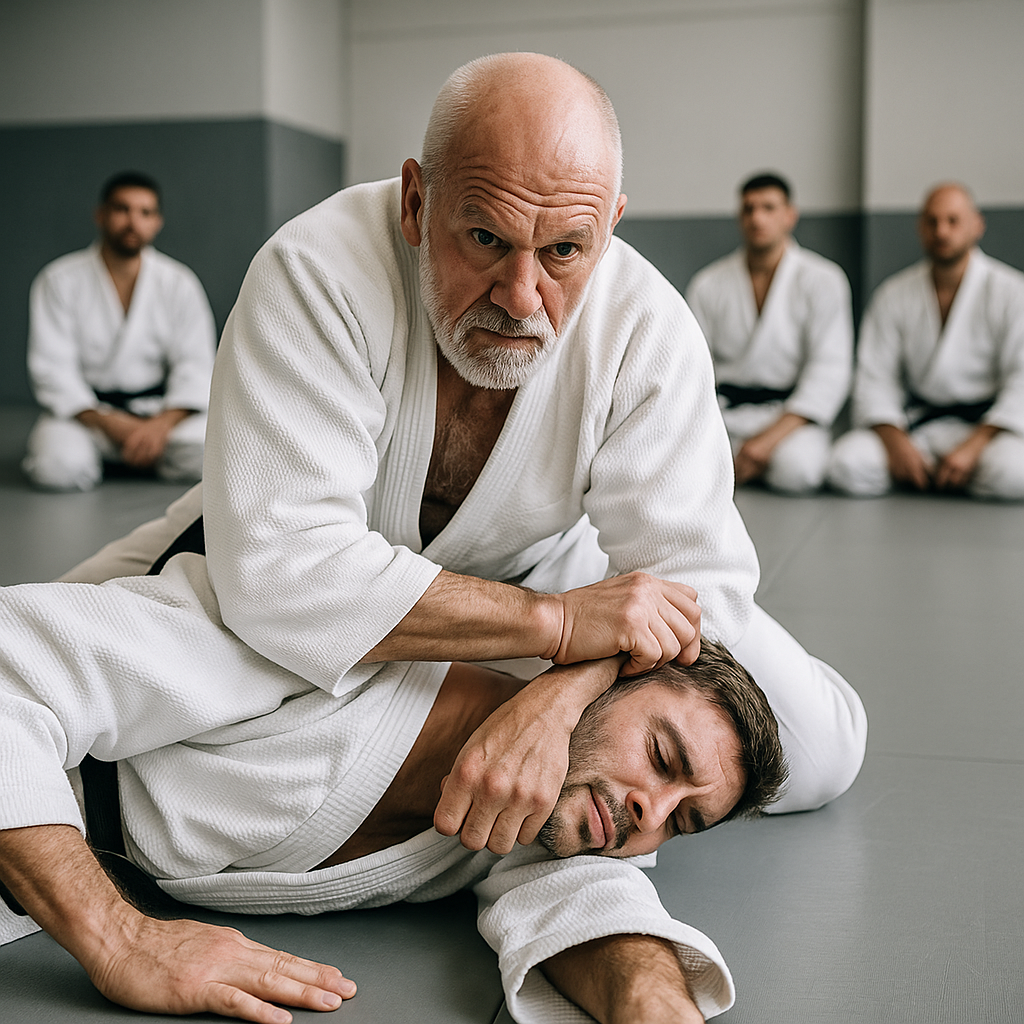The Importance of Flexibility for Men
Stretching is often overlooked in men’s fitness routines, but it is a crucial component that should not be ignored. Whether you are an athlete, a fitness enthusiast, or simply looking to improve your overall health and well-being, incorporating flexibility training into your regimen can bring numerous benefits. In this article, we will delve into the reasons why flexibility matters specifically for men. We will explore the advantages of flexibility training, debunk common myths surrounding male flexibility, examine the science behind stretching, provide a comprehensive guide to flexibility exercises, discuss how to integrate flexibility into your fitness routine, offer tips to overcome challenges, and highlight the role of flexibility in injury prevention and recovery. By the end of this article, you will understand why flexibility is not only for women but is essential for every man seeking optimal physical performance and longevity.
Understanding the Role of Flexibility in Men’s Fitness Regimen
Flexibility is often overlooked in men’s fitness routines, but it’s time to give it the attention it deserves. While building strength and endurance are important, neglecting flexibility can lead to a host of issues down the road. Flexibility is the ability of your muscles and joints to move through their full range of motion, and it plays a crucial role in maintaining overall physical health.
The Impact of Poor Flexibility on Men’s Health
Poor flexibility can have a significant impact on men’s health. Tight muscles and limited range of motion can lead to muscle imbalances, increased risk of injuries, and even chronic pain. Additionally, poor flexibility can affect everyday activities such as sitting, standing, and walking, leading to postural issues and decreased quality of life. By prioritizing flexibility training, men can improve their overall health and well-being.
Benefits of Flexibility Training for Men
Enhanced Athletic Performance: How Flexibility Makes a Difference
Flexibility training can greatly enhance athletic performance for men. Improved flexibility allows for better movement efficiency, increased power output, and reduced risk of muscle strains. Whether you’re a professional athlete or simply enjoy recreational sports, working on your flexibility can give you a competitive edge and help you reach your full potential.
Improved Posture and Balance for Men
Good posture not only makes you look taller and more confident, but it also has numerous health benefits. Flexibility training can help men improve their posture by releasing tension in tight muscles and lengthening them. By achieving better posture, men can alleviate common issues such as lower back pain and neck strain, and improve their overall balance and stability.
Reduced Risk of Injuries in Physical Activities
One of the most important benefits of flexibility training for men is the reduced risk of injuries during physical activities. By increasing the range of motion in your muscles and joints, you can better adapt to sudden movements, absorb impact, and prevent muscle strains. Whether you’re lifting weights, playing sports, or simply going for a run, maintaining good flexibility can help you stay injury-free.
Common Myths and Misconceptions about Male Flexibility
“Flexibility is only for women” – Debunking Gender Stereotypes
It’s time to put an end to the notion that flexibility is only for women. Flexibility is important for everyone, regardless of gender. Men have just as much to gain from improving their flexibility as women do. So, let’s break free from the gender stereotypes and embrace the benefits that flexibility training can offer to men.
Separating Fact from Fiction: Dispelling Misconceptions about Male Flexibility
There are several misconceptions surrounding male flexibility that need to be debunked. Some believe that men are naturally less flexible than women, but flexibility is not solely determined by gender. It is influenced by various factors such as genetics, lifestyle, and physical activity levels. With the right training and consistency, men can achieve remarkable flexibility and reap the associated health benefits.
The Science Behind Stretching: How It Impacts Men’s Bodies
Understanding Muscle Anatomy and Physiology
To understand the impact of stretching on men’s bodies, it’s essential to grasp the basics of muscle anatomy and physiology. Muscles are made up of fibers that can become tight or tense due to physical activity, inactivity, or stress. Stretching helps lengthen these muscle fibers, increase blood flow, and promote flexibility.
The Role of Stretching in Increasing Range of Motion
Stretching plays a vital role in increasing the range of motion in men’s bodies. Regular stretching exercises gradually lengthen the muscles, tendons, and connective tissues, allowing for a greater range of motion. This increased flexibility enables men to perform movements more effectively and with reduced risk of injury.
The Relationship Between Flexibility and Muscle Strength
Contrary to popular belief, flexibility and muscle strength are not mutually exclusive. In fact, they go hand in hand. Adequate flexibility allows muscles to move freely and contract more efficiently, resulting in improved strength and power. By incorporating stretching into their fitness routine, men can enhance their muscle strength and overall physical performance. So, let’s ditch the notion that being flexible means being weak!
Flexibility Exercises for Men: A Comprehensive Guide
Static Stretching: Techniques and Benefits
When it comes to improving flexibility, static stretching is a tried and true method. This involves holding a stretch for a prolonged period, usually around 30 seconds to a minute. Static stretching helps lengthen and relax your muscles, making them more pliable and less prone to injury. Incorporate static stretches into your routine for major muscle groups like hamstrings, quadriceps, and shoulders. Remember, slow and steady wins the flexibility race!
Dynamic Stretching: Warming Up and Preparing the Body
Dynamic stretching is all about adding movement to your stretches. Unlike static stretching, dynamic stretching involves continuous motion, like leg swings or arm circles. This type of stretching is perfect for warming up your muscles before a workout or physical activity. Dynamic stretching helps increase blood flow to your muscles, improves range of motion, and boosts overall performance. So, get those limbs in motion and unleash the flexibility superhero within you!
Proprioceptive Neuromuscular Facilitation (PNF): Advanced Stretching Methods
If you’re ready to take your flexibility game to the next level, PNF stretching is your secret weapon. PNF involves a combination of stretching and contracting muscles to achieve greater flexibility. This technique typically requires a partner or a prop to apply resistance. PNF can help improve flexibility, strength, and coordination. Just make sure to have a willing partner or a trusty resistance band by your side for this advanced stretching adventure!
Incorporating Flexibility into Men’s Fitness Routine
Designing a Balanced Workout Program with Flexibility Training
No workout routine is complete without a good dose of flexibility training. To incorporate flexibility into your fitness routine, aim for at least two to three sessions per week. Mix it up by alternating between static, dynamic, and PNF stretches. Remember to focus on all major muscle groups to maintain overall flexibility and prevent any imbalances. Variety is the spice of flexibility, my friend!
Integrating Stretching into Warm-up and Cool-down Phases
Flexibility should never be an afterthought. It’s essential to include stretching in both your warm-up and cool-down phases. Before starting any physical activity, spend a few minutes performing dynamic stretches to prepare your muscles for action. After your workout, treat yourself to some static stretches to cool down and reduce muscle soreness. Your body will thank you, and you’ll be ready to tackle the day like a limber warrior.
Combining Flexibility Exercises with Strength and Cardiovascular Training
Flexibility and strength go hand in hand like Batman and Robin. To optimize your fitness gains, combine flexibility exercises with strength and cardiovascular training. Find creative ways to incorporate stretches within your workout, such as doing yoga poses between weightlifting sets or adding active stretches during your cardio sessions. By combining these elements, you’ll become a well-rounded, flexible force to be reckoned with!
Overcoming Challenges and Building Consistency in Flexibility Training
Identifying and Addressing Common Barriers to Regular Stretching
Let’s face it, life can get busy, and sometimes stretching takes a backseat. But don’t let that be your excuse! Identify common barriers that prevent you from regular stretching, such as time constraints or lack of motivation. Once you recognize these hurdles, you can find creative solutions to overcome them. Stretch while watching Netflix or make it a family affair by stretching with your loved ones. There’s always a way to make flexibility training fit into your lifestyle!
Setting Realistic Goals and Tracking Progress
Setting goals and tracking progress is not just for weightlifters and marathon runners. It’s equally important for your flexibility journey. Set realistic goals for yourself, like touching your toes without bending your knees or improving your range of motion in certain exercises. Keep a journal or use a tracking app to record your progress. Celebrate every milestone reached, no matter how small. Remember, every inch of progress is a victory!
Tips for Staying Motivated and Establishing a Routine
Flexibility training, like any other fitness endeavor, requires motivation and consistency. To stay motivated, find ways to make stretching enjoyable. Blast your favorite tunes, follow along with online yoga classes, or reward yourself with a post-stretching treat. Establish a routine by scheduling specific times for stretching in your calendar. Treat it as a non-negotiable appointment with yourself. Soon enough, flexibility training will become a delightful habit you can’t resist!
Injury Prevention and Recovery: How Flexibility Plays a Role for Men
Preventing and Rehabilitating Common Muscular Injuries
Flexibility isn’t only about touching your toes or doing impressive splits; it’s also a vital tool in preventing and recovering from injuries. By maintaining good flexibility, you can reduce the risk of muscle strains, tears, and other pesky injuries. If you’re unfortunate enough to get injured, flexibility exercises can aid in your recovery by promoting blood flow, reducing muscle stiffness, and improving overall healing. So, stretch like your body’s guardian angel and keep those injuries at bay!In conclusion, flexibility is a vital aspect of men’s fitness that should not be overlooked. By incorporating regular flexibility training into your routine, you can enhance athletic performance, improve posture and balance, reduce the risk of injuries, and promote overall health and well-being. Remember, flexibility is not just for women, and it plays a significant role in maintaining optimal physical performance and longevity for men as well. So, embrace the benefits of flexibility, debunk the myths, and make stretching a regular part of your fitness journey. Start reaping the rewards of increased flexibility today and enjoy a more active, resilient, and fulfilling life.




